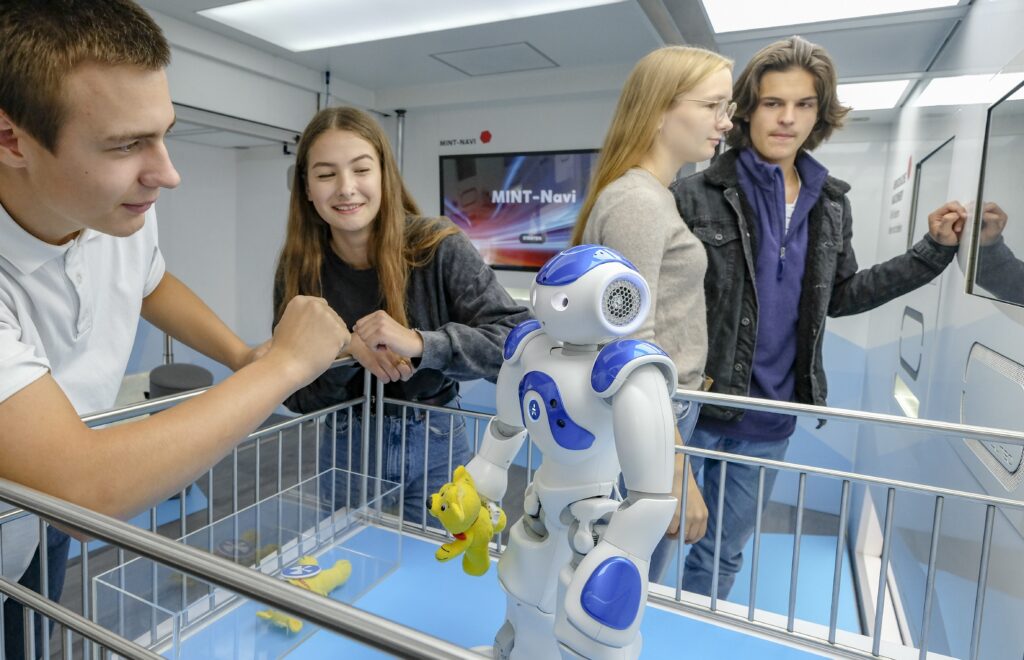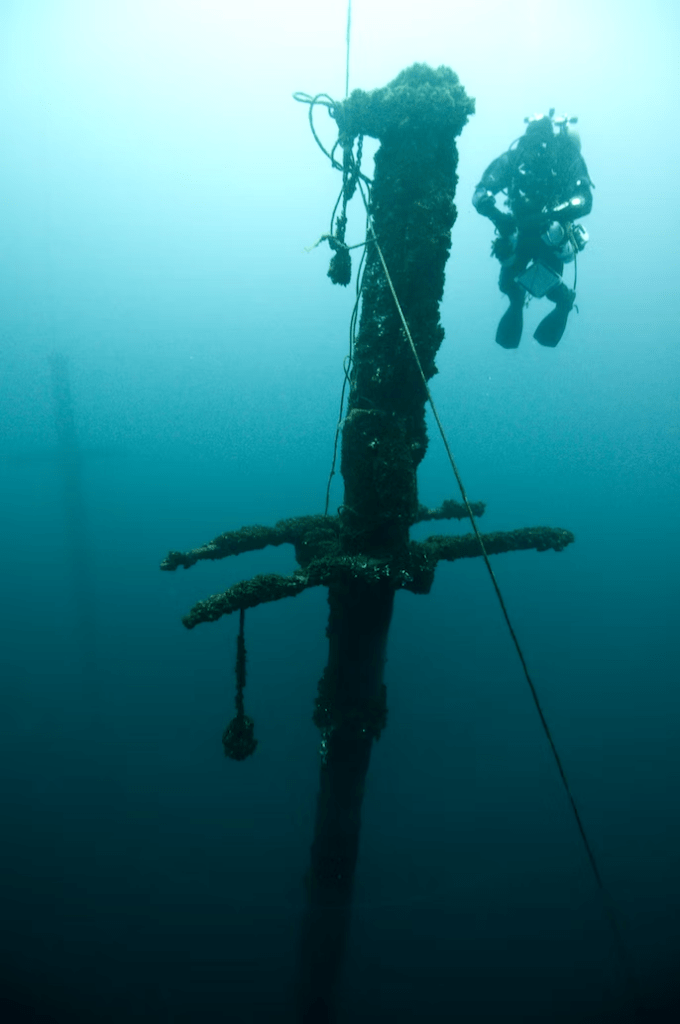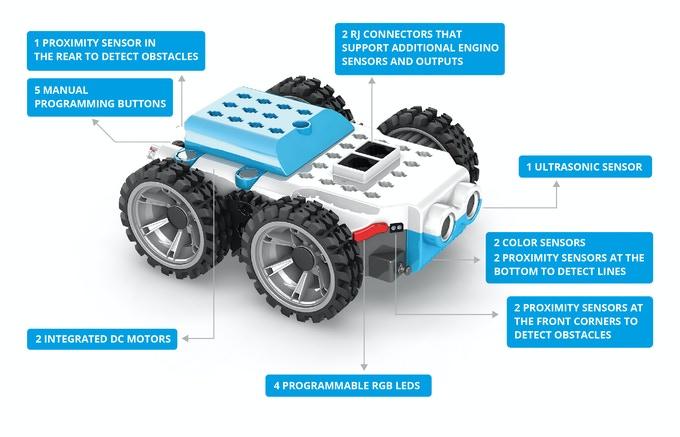Vom 22. bis 29.09.2023 ist der Truck zu Gast am Heinrich-Böll-Gymnasium in Troisdorf. Seine Zielsetzung: Schülerinnen und Schüler durch das Erleben und Ausprobieren von Zukunftstechnologien für Bildungs- und Berufswege im MINT-Bereich (Mathematik, Informatik, Naturwissenschaft, Technik) zu gewinnen. Das Projekt wird gefördert durch die Regionaldirektionen NRW, Hessen und Berlin-Brandenburg der Bundesagentur für Arbeit. Stiftung und Regionaldirektionen arbeiten Hand in Hand, um Jugendlichen bestmögliche Berufsorientierung zu bieten und dem wachsenden MINT-Fachkräftemangel entgegenzuwirken.
Der TouchTomorrow-Truck ist konzipiert für 8. und 11. Klassen. Moderiert wird der Besuch von vier „MINT Coaches“ (speziell geschulte Naturwissenschaftler*innen), die mit den Schülerinnen und Schülern einen Dialog auf Augenhöhe führen. Dabei wird niemand zu MINT überredet. TouchTomorrow ist ein inspirierendes Informations- und Interaktionsangebot, das auch sprachlich oder gesellschaftswissenschaftlich interessierte Schülerinnen und Schüler anspricht und ihnen neue Perspektiven eröffnen kann – insbesondere im Hinblick auf die zunehmend fachübergreifenden Formen der Zusammenarbeit in wechselnden Teams.
Die Schülerinnen und Schüler arbeiten in Kleingruppen rotierend an verschiedenen Zukunfts-Themenstationen aus Naturwissenschaft und Technik. Diese reichen von Virtual und Augmented Reality Learning über Robotik bis hin zu Gedankensteuerung (z. B. im Kontext von Medizintechnik). Durch die dialog- und diskursorientierte Vermittlung erhalten die Jugendlichen ein individuelles Verständnis dafür, dass MINT-Bildung bereits eine wesentliche Grundlage der heutigen, aber vor allem der in Zukunft weiter digitalisierten Lebens- und Arbeitswelt ist. Der große Vorteil für Schulen: Ein außerschulischer Lernort auf dem eigenen Schulhof.
Marco Alfter, Geschäftsführer Dr. Hans Riegel-Stiftung:
„Der TouchTomorrow-Truck weist eine zentrale Innovation auf: Wir vermitteln nicht nur einmalig naturwissenschaftlich technische Inhalte und Zukunfts-themen, sondern stellen diese in einen konkreten, langfristig angelegten Kontext zu Ausbildungs- und Berufs-perspektiven. Die Begeisterung und das initiale Interesse für MINT-Themen sind das Fundament für eine intensive, anhaltende Beschäftigung in diesem für die deutsche Wirtschaft so wichtigen Feld – etwa in der Wahl der Leistungskurse oder für die Ausbildungswege nach der Schule.

Wir freuen uns sehr über die enge Zusammenarbeit mit der Bundesagentur für Arbeit, die das Projekt über drei Regionaldirektionen fördert. Die Expert*innen der lokalen Arbeitsagenturen knüpfen mit ihrer Berufsberatung nahtlos an die Zukunftsimpulse von TouchTomorrow an und sind damit eine echte Bereicherung für das Konzept.
Uns ist es wichtig, dass es nicht beim einmaligen WOW-Effekt des Trucks bleibt, sondern dass interessierte Jugendliche dranbleiben. Deshalb erhalten alle Schülerinnen und Schüler ein RFID-Speichermedium, mit dem sie im Truck Infos sammeln, sie zu Hause wieder abrufen und ihre Interessen
Schwerpunkte auf www.touchtomorrow.de vertiefen können. Auch hier arbeiten wir vernetzt mit den zahlreichen Angeboten der BA.“







